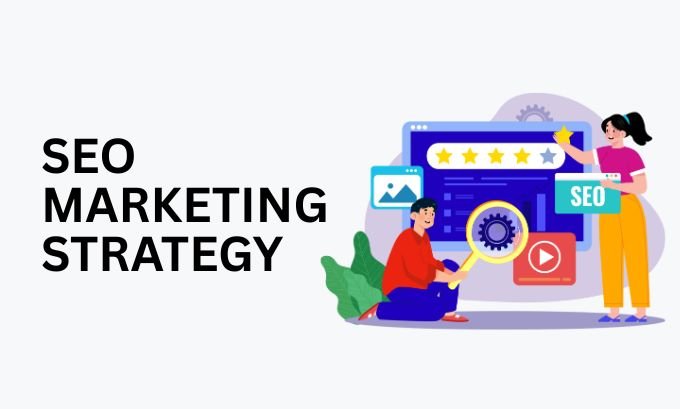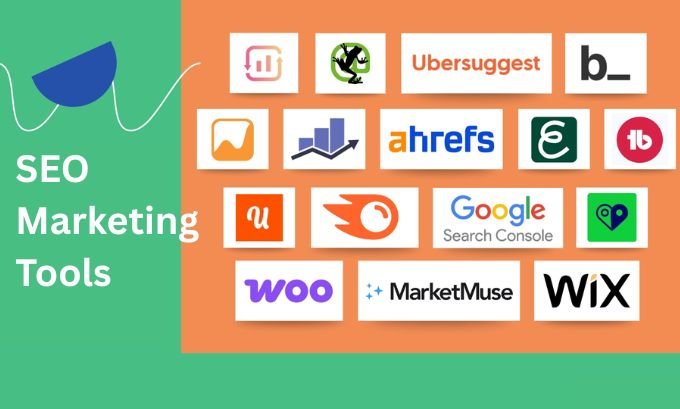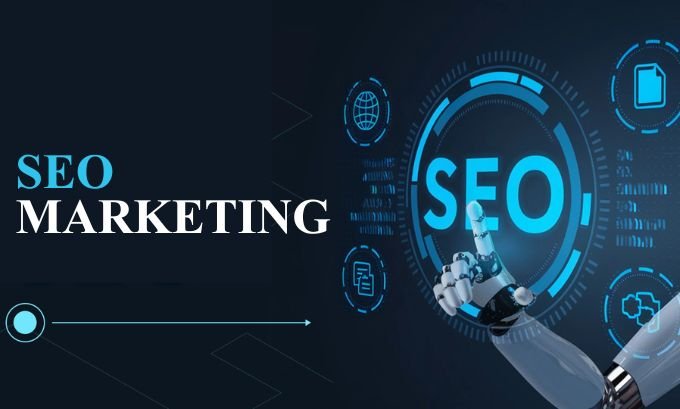SEO marketing is the process of improving your website’s visibility on search engines to attract more organic, or unpaid, traffic. It involves a combination of technical adjustments, content creation, and authority-building strategies. By mastering SEO marketing, you can connect with more potential customers and grow your business online without paying for every click.
This guide will walk you through the essential components of a successful SEO marketing strategy. You’ll learn how to optimize your site, create content that ranks, and build authority that lasts.
Table of Contents
What Is SEO Marketing and Why Is It Essential?
SEO marketing is a digital marketing discipline focused on increasing a website’s rank on a Search Engine Results Page (SERP). The goal is to appear as high as possible for queries relevant to your business. When users on search engines like Google look for products or information you offer, a strong SEO strategy ensures they find you first.
This process is vital because the majority of online experiences begin with a search engine. High rankings on the SERP lead to more clicks, which translates to more traffic, leads, and sales. Unlike paid advertising, this traffic is “free,” offering a sustainable return on investment over time.
The Three Pillars of Modern SEO Marketing
Effective SEO marketing rests on three core pillars. Each one addresses a different aspect of how search engines find, understand, and rank your website.
1. On-Page SEO: Crafting the Perfect Content
On-Page SEO involves optimizing the individual pages of your website. This includes the content itself, its structure, and the HTML source code. The goal is to make each page as clear and valuable as possible for both users and search engine crawlers.
Key elements of On-Page SEO include:
- Content Quality: Creating in-depth, original, and helpful content that fully answers a user’s query.
- Keyword Optimization: Naturally incorporating target keywords and related phrases into your text, headings, and titles.
- User Experience (UX): Ensuring your site is easy to navigate, readable, and engaging. This includes using clear headings, short paragraphs, and multimedia elements like images and videos.
- Internal Linking: Linking to other relevant pages on your own website to help search engines understand its structure and spread authority.
2. Off-Page SEO: Building Authority and Trust
Off-Page SEO refers to all the activities you do away from your website to raise its authority and ranking. It’s about building your site’s reputation across the web.
The most critical component of Off-Page SEO is acquiring backlinks. These are links from other websites to yours. Google views high-quality backlinks as votes of confidence, signaling that your content is trustworthy and valuable. Strategies for earning backlinks include:
- Creating exceptional content that others naturally want to link to.
- Guest posting on reputable blogs in your industry.
- Reaching out to journalists and bloggers with unique data or stories.
- Getting listed in relevant online directories.
3. Technical SEO: Ensuring a Solid Foundation
Technical SEO focuses on the backend of your website to ensure search engines can crawl and index it efficiently. If a search engine can’t access your content, it can’t rank it, no matter how great it is.
Core aspects of Technical SEO are:
- Site Speed: Optimizing page load times for a better user experience.
- Mobile-Friendliness: Ensuring your site works perfectly on all devices, as Google uses mobile-first indexing.
- XML Sitemap: Creating a sitemap and submitting it via Google Search Console to help search engines discover all your pages.
- Site Architecture: Organizing your website’s structure logically so users and crawlers can find content easily.
- Crawlability: Fixing any errors that might prevent search engine bots from accessing your site.

A Personal Experience with SEO Marketing Strategy
When I first launched my e-commerce store selling handmade leather goods, I assumed great products would sell themselves. For months, traffic was a trickle. I was getting maybe 10-15 organic visitors a day, and sales were nonexistent. I knew I had to figure out SEO marketing.
My first step was a deep dive into Keyword Research. I used tools like SEMRush to find out what my potential customers were searching for. Instead of just “leather wallet,” I discovered long-tail keywords like “slim minimalist wallet for front pocket” and “handmade full-grain leather bifold.”
Armed with this knowledge, I revamped my product pages. This was my initial foray into On-Page SEO. I wrote detailed descriptions focusing on craftsmanship, materials, and the problems my products solved. I also started a blog, writing articles like “How to Care for Your Leather Wallet” and “The Difference Between Full-Grain and Top-Grain Leather.”
Next, I tackled Technical SEO. I installed a plugin to compress my high-resolution product images, which dramatically improved my site speed. I also created an XML sitemap and submitted it through my newly created Google Search Console account. Within a few weeks, I saw that Google was indexing my new blog posts.
The biggest challenge was Off-Page SEO. Getting backlinks felt intimidating. I started by writing a detailed guide on identifying quality leather. I then shared it with fashion bloggers and men’s lifestyle websites. A few of them linked to it as a resource, and that’s when things really took off. Those first few authoritative backlinks were like a signal to Google that my small site had valuable information.
Six months later, my organic traffic had grown to over 200 visitors a day. I was ranking on the first SERP for several of my target keywords, and more importantly, I was making consistent sales. This experience taught me that SEO marketing isn’t a single action but a persistent, integrated strategy.
What I Liked About This Process
- Empowerment: Learning SEO gave me control over my traffic. I wasn’t reliant on paid ads anymore.
- Customer Insight: Keyword research was like a window into my customers’ minds. I understood their needs better, which helped with product development.
- Long-Term Value: The effort I put into creating content and building backlinks continues to pay dividends years later.
- Measurable Results: Using Google Search Console and SEMRush, I could track my rankings, see which pages were performing well, and identify new opportunities.
Areas for Improvement
- Overwhelming at First: The sheer amount of information on SEO can be paralyzing. It was hard to know where to start.
- Patience is Required: SEO is not an overnight fix. It took months to see significant results, which can be discouraging.
- Technical Hurdles: As a non-developer, some aspects of Technical SEO, like schema markup and hreflang tags, were difficult to implement without help.

Choosing Your SEO Marketing Tools
Your SEO marketing efforts can be greatly enhanced with the right tools. While there are countless options available, some are essential for any serious strategist.
| Tool Type | Popular Examples | Primary Use Case |
|---|---|---|
| All-in-One SEO Platforms | SEMRush, Ahrefs, Moz Pro | Comprehensive keyword research, competitor analysis, rank tracking, and site audits. |
| Search Engine Consoles | Google Search Console, Bing Webmaster Tools | Monitoring site health, submitting sitemaps, and viewing performance data directly from the search engine. |
| Keyword Research Tools | AnswerThePublic, Ubersuggest, Keywords Everywhere | Finding new keyword ideas, search volumes, and understanding user questions. |
| Technical SEO Tools | Screaming Frog SEO Spider, GTmetrix | Crawling your site to find technical errors and analyzing page speed. |
| Analytics Platforms | Google Analytics 4 | Tracking user behavior, traffic sources, conversions, and overall website performance. |
For beginners, starting with Google Search Console and Google Analytics is non-negotiable—they are free and provide fundamental data. Investing in an all-in-one platform like SEMRush can then accelerate your growth by providing deeper competitive insights and more advanced keyword research capabilities.
Frequently Asked Questions (FAQ)
1. How long does SEO marketing take to show results?
Typically, it takes 4 to 6 months to see significant results from an SEO marketing strategy. The timeline depends on factors like your website’s age, the competitiveness of your industry, and the consistency of your efforts. Building authority and ranking for valuable keywords is a long-term investment.
2. Can I do SEO marketing myself?
Absolutely. With the wealth of free resources, guides, and affordable tools available, anyone can learn the fundamentals of SEO marketing. Start with On-Page SEO and setting up Google Search Console. As you grow, you can explore more advanced Technical SEO and Off-Page SEO tactics or hire a specialist.
3. What’s the difference between SEO and SEM?
Search Engine Optimization (SEO) focuses on earning organic (unpaid) traffic from search results. Search Engine Marketing (SEM) is a broader term that encompasses both SEO and paid advertising methods, such as pay-per-click (PPC) ads on a SERP.
4. Is keyword research still important?
Yes, keyword research remains a foundational part of SEO marketing. While search engines are smarter about understanding context and semantics, keywords still tell you what users are looking for and the language they use. It helps you align your content with user intent.
5. How many backlinks do I need to rank?
There is no magic number. Quality is far more important than quantity. A single backlink from a highly authoritative and relevant website (like a major news outlet in your industry) is more valuable than hundreds of links from low-quality, spammy sites. Focus on earning high-quality backlinks naturally.
6. What is the most important part of SEO?
While all three pillars (On-Page, Off-Page, Technical) are crucial, many experts agree that creating high-quality, user-focused content is the most important element. Excellent content naturally attracts backlinks, engages users, and gives search engines what they want: the best answer to a user’s query.
7. How do tools like SEMRush help with SEO?
Tools like SEMRush are powerful because they provide data that is otherwise hard to get. You can see what keywords your competitors rank for, analyze their backlink profile, find new content ideas, track your own ranking progress on the SERP, and perform technical audits to find issues on your site.
Conclusion: Your Path to SEO Marketing Mastery
SEO marketing is a powerful, sustainable way to drive growth for your business. It’s not about quick tricks or gaming the system; it’s about providing real value to users and making it easy for search engines to recognize that value.
By focusing on the three pillars—On-Page SEO, Off-Page SEO, and Technical SEO—you can build a robust strategy that attracts your ideal customers. Start by conducting thorough keyword research, creating exceptional content, and ensuring your site is technically sound with tools like Google Search Console. As you build authority with high-quality backlinks, you will see your visibility on the SERP climb.
The journey requires patience and continuous learning, but the reward is a steady stream of organic traffic that can become your business’s most valuable asset. Ready to take control of your online presence? Start by auditing your website’s On-Page SEO today.

